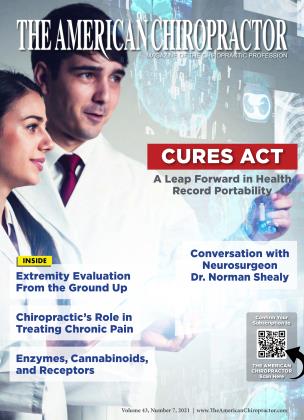We’ve all been there—for any number of reasons, you find yourself in an urgent care after hours on a weekend. Images confirm that nothing is broken, but it will be best to follow up with your own provider if the pain and limited mobility continue for more than a couple of days. Sounds simple enough.
On Wednesday, the pain in your back hasn’t subsided. A quick call to your chiropractic office starts the adventure. They request a copy of the imaging report for comparison. During your first hopeful call to the urgent care, you learn their imaging is managed by an independent radiology group that can be reached at a different number. Three calls and a quick stop at the business office later, you have faxed the request for a “Release of Medicare Records Authorization” form to the imaging office so that results can be sent to your chiropractor.
As your care escalates to additional therapy or surgical care, the web of those who need access to specific portions of your records grows. The hospital has its own patient portal system that may or may not speak with an independent chiropractic group that has yet another patient portal system. The terms “interoperability” or even “coordination of care” really lose their practical application in a competitive healthcare environment. Is there hope for a simplified solution on the horizon? There may be with the implementation and enforcement of the Cures Act.
"...In short, the Cures Act will transform how we exchange healthcare data."
What Is the Cures Act?
The 21st Century Cures Act is a federal law created by the Office of the National Coordinator for Health Information Technology (ONC) to advance interoperability; support the access, exchange, and use of electronic health information (EHI); and address occurrences of information blocking. It aims to achieve true healthcare information data portability and accessibility in the U.S. healthcare system.
The Cures Act applies to patients, doctors, hospitals, and health information technology (health IT) developers, and it will impact them in a variety of ways. It allows patients to easily access and transfer their health data while protecting their privacy and providing security for that data, provides implementation requirements for health IT certification, and establishes information-blocking exceptions for health care. In short, the Cures Act will transform how we exchange healthcare data.
What Does the Cures Act Mean for Chiropractors?
The big takeaway for healthcare providers, including chiropractors, is that they must give patients access to EHI at their request, in the manner requested, and not engage in information-blocking. In the Cures Act, ONC also provides guidance on information-blocking and defines eight specific exceptions that allow clinicians and hospitals flexibility related to preventing harm, privacy, security, infeasibility, health IT performance, content and manner, fees, and licensing.
The Cures Act will also promote modern technology approaches allowing clinicians and hospitals to easily provide patients with access to their information in a fully automated, low-cost manner. Application programming interface (API) standards will encourage secure access to data, reducing the burden on providers and health systems by making physician chart requests easy and allowing providers to easily switch health systems and software.
Conclusion
The ONC’s Final Rule is designed to give patients and their healthcare providers secure access to health information. When thinking about preparing your practice for the Cures Act, your next important step is to evaluate how the technology you use in your practice will support you in achieving the goals and requirements of this new regulation. Do your current electronic health records “play nice” with other vendors and technology? Does it make it easy and efficient to interoperate and share patient information? The Cures Act calls on the healthcare industry to adopt standardized application programming interfaces (APIs) that will support secure and easy access to electronic health information while improving the visibility of healthcare services, quality, and costs. How will you ensure your patients have the least amount of web tracing or repetitive care due to incomplete records?
Kama Morrow, CPC, RCC, CCS-P, is the client services manager for Practice EHR. She has spent nearly three decades in the industry-leading electronic health record (EHR) implementations and providing consulting and training for a variety of healthcare organizations. Morrow is a frequent contributor to highly regarded industry publications and national conferences, providing insights on practice management, coding, billing, and other industry-related topics. For more information about Practice EHR, visit www.practiceehr. com, email [email protected], or call 469-305-7171.
 View Full Issue
View Full Issue






